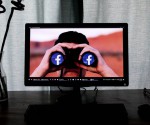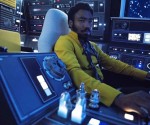I’m in an Age-Gap Marriage, and Yes, Pairing Younger Actresses with Older Male Leads IS a Problem

Will Smith (46) and Margot Robbie (24) in Focus.
When I met my husband, I was 29 and he was 43. I had just gotten out of a relationship with a guy my age. My family and friends were taken aback when I introduced my new boyfriend, because 14 years seemed like a huge age difference. But it didn’t really feel that way at the time, and in the years we’ve been married, it’s felt like we’ve gotten closer and closer in age.
But does this make me want to see 43-year-old actors paired with 29-year-old actresses in every single movie we watch?
No. No, it does not.
I’ve been reading a lot of articles about Hollywood’s May-December pairings lately. It started when Maggie Gyllenhaal was told that at 37, she was “too old” to play the love interest of a 55-year-old man. Then there were discussions about Scarlett Johansson’s 17-year age gap with Mark Ruffalo in The Avengers: Age of Ultron. Then came The Vulture’s piece, comparing the ages of three of the most bankable female leads with the ages of the actors they’ve been paired with.
And that has brought the inevitable backlash. I’ve seen lots of comments that go like this: “there’s a 10-year gap between my partner and I, and I’m offended by this complaint, because you are suggesting that age-gap relationships are disgusting.”
That’s missing the point.
My husband and I are not the norm. According to the 2013 Census, only 4.8 percent of heterosexual married couples include a husband 10-15 years older than the wife, and one percent of include a wife 10-14 years older than the husband. Most heterosexual couples (about 53 percent) marry spouses within 1-3 years of each other. (Unsurprisingly, I was not able to find much data on the age disparity of same sex marriages, but a line in a Census report from 2009 seems to suggest that same sex couples do follow the same age disparity trends as heterosexual couples, with a typical couple having a one or two-year age disparity.)
Ironically, by making heterosexual older-male-to-younger-female-relationships the norm, Hollywood is actually making it more difficult for me to see couples that resemble my husband and myself. Why? Because, the couples we see on screen are often not presented as age-gap couples. Many of them are presented as The Everycouple. She just happens to look like she’s in her 20s, because that’s what every woman should look like, right?
If you’re a leading man, you’re a leading man forever. Hugh Grant, Robert Downey Jr. and Will Smith — all over 45 — are still getting leading roles. But remember when Cameron Diaz was the female lead in absolutely everything? She’s in her 40s now, and I cannot remember the last time I saw her in a movie. Think of all the actresses who were big 10 years ago: Jennifer Aniston, Angelina Jolie, Jennifer Garner. We don’t see them as much now as we did in the ‘00s. Now look at the guys. We see Leonardo DiCaprio and Brad Pitt as much as we ever did. Not only does this mean that talented actresses over the age of 30 are not getting the work they should be getting, it also means that the rest of the women, those of us who have been watching films like this our whole lives, now believe, on some level, that we should all look and behave like we are 25, even if we are 42.
It’s unfair to women, it’s unfair to actresses, and, to be honest, it doesn’t do any favors for people who are in age-gap relationships, either. As someone who is in a committed relationship with an older man, I would, just once, like to see a film that realistically portrays an age-gap relationship.
“Realistically” is the key word here, because often, when age-gap relationships are shown on screen, they are fetishized. Think of the uncomfortable teenage-to-middle-age affairs like the ones in Lost in Translation, or in Ghost World, or anything filmed by Woody Allen in the last 30 years. (His latest involves a professor falling in love with a student who then cures his impotence, because of course.) It seems like whenever a film acknowledges an age-gap relationship, the age difference has to be huge, the younger partner is usually female, and the issues addressed are always super-male-gazey. For example: she’s young and hot, so he fears she will leave him for a young hot guy as he struggles with impotence. Insert the Viagra joke of your choice and you’ve got an age-gap film. Or you’ve got films like The Graduate or The Boy Next Door, which feature a young male lead and a cougar-like female lead and one of them is exploiting the other.
These are not portrayals of healthy age-gap relationships, Hollywood.
Here’s the thing about an actual age-gap relationship: there are certain issues that go along with them. I’m not talking about impotence, the go-to issue when films are actually made about age gaps. I’m talking about subtler issues, like culture. My husband came of age in the late ‘70s, so, for example, his sensibilities are much different from mine. When we have discussions about how to raise our son, I often find myself faced with a clash between Boomer and Gen X values. This extends to our relationship with technology: he’s a digital immigrant. He worries about how much information I put online in my career as a freelance writer. We are constantly discussing these things, making sure we are on the same page.
Then there’s the fact that my life is running 14 years behind his. He watches me deal with issues and insecurities he’s already dealt with, and I’m sure that can be frustrating. Meanwhile, I worry about his health, and we both worry about estate planning, because it’s likely that someday, sooner than I’d like, he’ll predecease me.
For me, this is what it costs to be married to the most wonderful person in the world. But the worries are real, and I’d like to see them depicted on screen.
A healthy, acknowledged age-gap relationship is what I’d like to see for once. I’m talking about pairing like the ones we see all the time on screen, like Bradley Cooper and Emma Stone, in Aloha, or like Johansson and Ruffalo in Age of Ultron. Gaps where the younger partner is well out of his or her teens, and if the older lead has issues, they are not all penile. Go ahead, filmmakers, cast actors with a 17-year age difference every once in a while, but acknowledge that the age difference exists in the film itself. Don’t ignore it. Don’t fetishize it. Just acknowledge it.
The rest of the time, when you’re casting a rom-com about A Typical Movie Relationship, where everyone is ambiguously in their late 20s or early 30s? Try casting two leads in their late 20s or early 30s. Maybe go crazy and cast two leads in their 40s. That’s what most heterosexual couples look like, after all.
The partner of the editor of this piece is 12 years her senior, and she agrees on all counts.
A.J. O’Connell is a freelance journalist and author. Her first book, Beware the Hawk, was published in 2012. She has contributed to Book Riot and Geek Eccentric. A.J. lives in Connecticut with her husband, her son, a dog, a cat and a fish that hates her. Her ideal day includes a lot of fiction writing, a lot of coffee and more comics than she can afford. She writes about writing and feminism at her blog, ajoconnell.com. Follow her on Twitter at @ann_oconnell.
—Please make note of The Mary Sue’s general comment policy.—
Do you follow The Mary Sue on Twitter, Facebook, Tumblr, Pinterest, & Google +?









